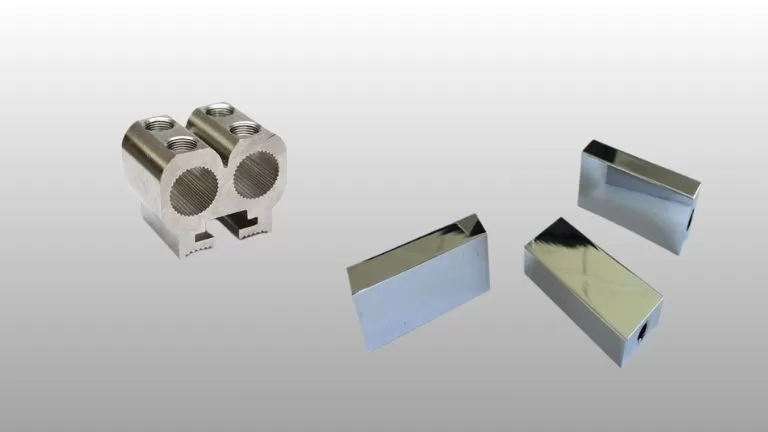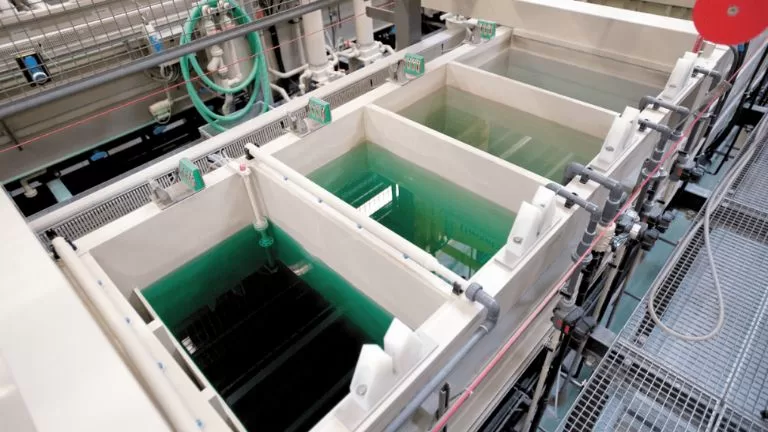Extruded Aluminum Profile Surface Treatment

Extruded aluminum profile surface treatment is essential for improving both functional and aesthetic properties, and it directly reflects the material’s quality. At HTS-ALU, we provide a full range of advanced surface treatment options, including 2 sandblasting lines, 6 wood grain lines, 2 vertical powder coating lines, 2 horizontal powder coating lines, 1 oxidation line, and electrophoresis treatment, ensuring outstanding durability and appearance.
These treatments enhance aluminum’s corrosion resistance, wear resistance, and environmental adaptability while offering various finishes, colors, and textures to meet diverse design and performance needs. With these high-quality processes, HTS-ALU ensures that aluminum profiles excel in industries such as construction, automotive, aerospace, and consumer goods.
Anodizing forms a transparent, protective oxide layer on the surface of the aluminum. This layer guards the aluminum against environmental damage, such as corrosion and wear, while providing a clean and smooth finish. It is suitable for many general-purpose applications that require basic protection and a polished appearance. At HTS-ALU, we operate advanced anodizing production lines that not only offer standard anodizing but also support colored anodizing and hard anodizing, meeting diverse functional and aesthetic needs for various industries.
Colored anodizing takes the standard anodizing process a step further by incorporating dyes into the oxide layer. This method produces aluminum profiles in a wide range of vibrant and custom colors, adding aesthetic appeal and meeting decorative or branding requirements. It is particularly popular in industries such as architecture, automotive, and consumer goods.
Colored anodizing takes the standard anodizing process a step further by incorporating dyes into the oxide layer. This method produces aluminum profiles in a wide range of vibrant and custom colors, adding aesthetic appeal and meeting decorative or branding requirements. It is particularly popular in industries such as architecture, automotive, and consumer goods.
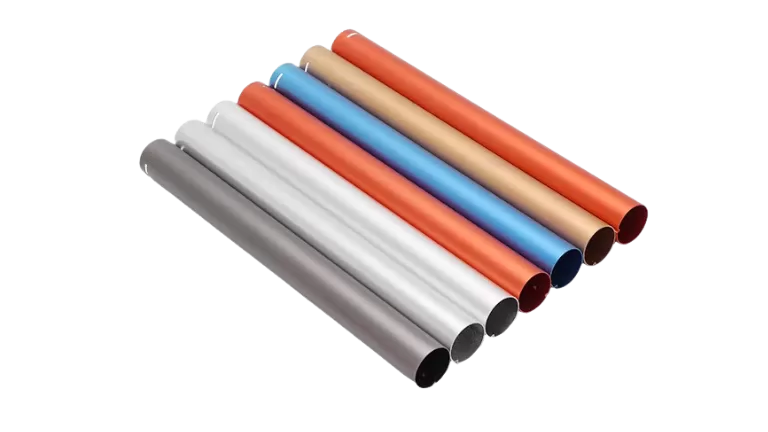

Electrophoretic Coating (E-Coating)
Electrophoretic coating, also known as electrophoresis or e-coating, is a premium surface treatment often combined with anodizing to achieve superior performance for aluminum profiles. The process starts with anodizing, where a transparent oxide film forms on the surface of the aluminum, offering a protective base layer that improves corrosion resistance and adhesion. After anodizing, the profiles are immersed in an electrically charged water-based solution during the e-coating process. This deposits a uniform paint layer onto the oxide film, combining the protective benefits of anodizing with the durability and aesthetics of electrophoretic coating. The result is dual-layer protection, delivering enhanced strength, durability, and aesthetic appeal.
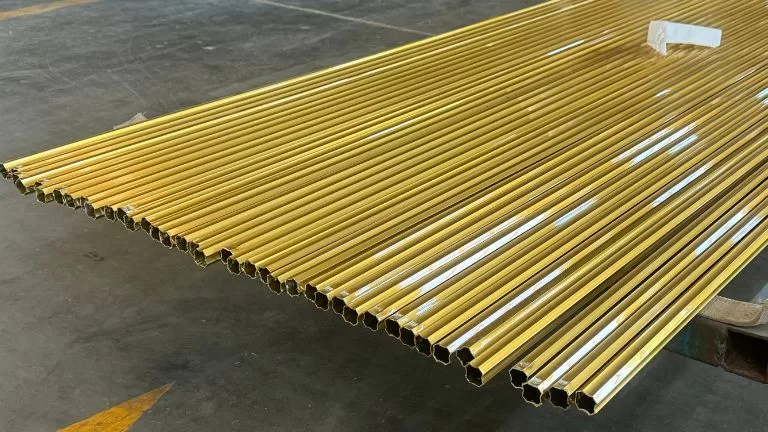
| Comparison | Electrophoretic Aluminum Profiles | Anodized Aluminum Profiles |
|---|---|---|
| Surface Protection | Higher protection with uniform coating and superior corrosion resistance compared to anodizing. | Good corrosion resistance but slightly lower gloss. |
| Color and Decorative Options | Wide variety of color choices, offering beautiful gloss with matte or high-gloss finishes. | Limited color options, typically silver or gold (less vibrant). |
| Coating Hardness and Strength | Good wear and scratch resistance. | Very high hardness, but scratch resistance is slightly weaker. |
| Processing Complexity | More complex, suitable for processing intricate profiles. | Simpler process. |
| Coating Thickness | Generally thicker (10-20 μm). | Thinner oxide layer (5-10 μm). |
| Applications | Architecture, high-end decoration, industrial components. | Suitable for structural parts with moderate performance requirements. |
Powder coating is an advanced surface finishing process for aluminum profiles that provides excellent durability, corrosion resistance, and vibrant aesthetics. It involves applying an electrostatically charged powder to the aluminum surface, which is then cured under high heat, creating a protective, uniform, and long-lasting coating. This finish is resistant to fading, chipping, and scratching, while offering a broad range of textures, gloss levels, and custom colors. At HTS-ALU, we can produce powder-coated finishes based on RAL color charts or Pantone color matching, ensuring we meet diverse design needs and specific customer preferences.
At HTS-ALU, we operate two vertical and two horizontal powder coating lines, enabling us to handle a wide variety of profile sizes and designs. Vertical lines are ideal for efficiently coating large or long aluminum profiles used in construction and industry, while horizontal lines allow for precision coating of smaller, intricate components perfect for decorative and detailed applications. This versatility enables us to deliver high-quality solutions for many industries, such as architecture, automotive, and furniture manufacturing.
Powder-coated aluminum profiles are extensively used in architecture and constructionfor building facades, window and door frames, and curtain walls, where both weather resistance and visual appeal are essential. They are also commonly found in furniture and interior design, including chair frames, table legs, shelving, and decorative trims. In the automotive industry, powder-coated components like trims, roof racks, and interior parts are valued for their durability and customizable finishes. Additionally, electronics and appliances rely on powder-coated profiles for device enclosures and parts, while industrial equipment benefits from structural frames and supports. For outdoor applications, powder-coated aluminum is ideal for fences, railings, pergolas, and signage, ensuring long-lasting performance in any environment.
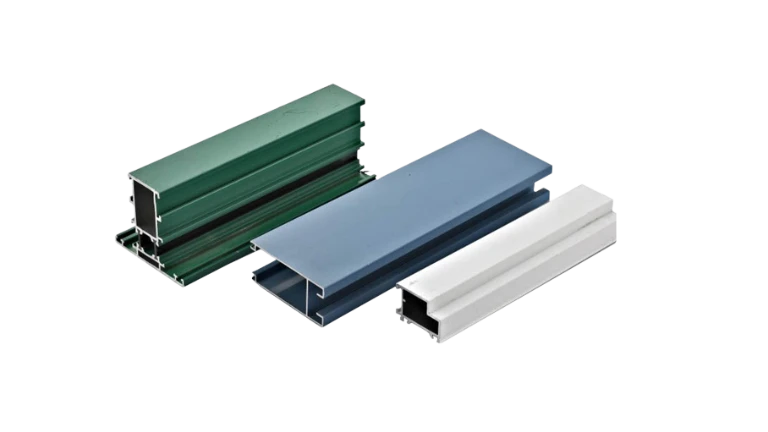
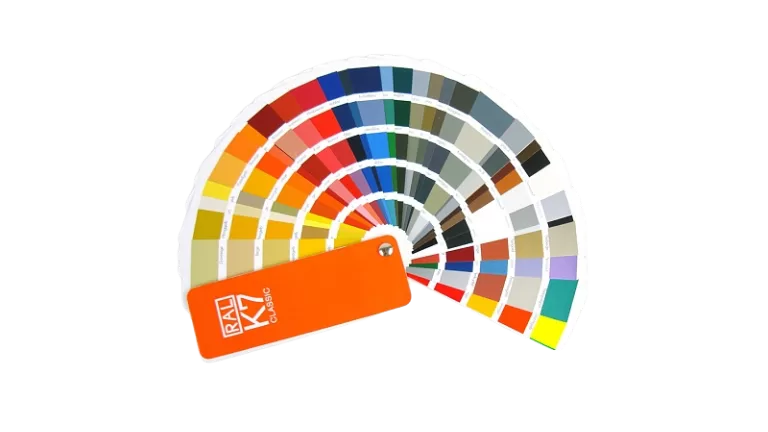
PVDF Coating
PVDF coating (Polyvinylidene Fluoride) is a high-performance surface treatment known for its excellent durability, weather resistance, and chemical stability. It creates a protective layer on aluminum profiles, offering superior performance in harsh environments. The coating is applied in multiple layers and cured at high temperatures to ensure strong adhesion, long-lasting protection, and a premium finish.
With an advanced PVDF production line, HTS-ALU delivers high-quality PVDF-coated aluminum profiles tailored to meet diverse needs. These profiles provide exceptional protection against UV rays, corrosion, humidity, and extreme weather, while maintaining vibrant color and gloss with minimal fading over time.
The flexible aesthetic options of PVDF-coated profiles—available in a variety of colors, textures, and finishes such as metallic, matte, and satin—make them ideal for visually demanding applications. They are widely used in architectural facades, curtain walls, roofing, and decorative panels, as well as in transportation, industrial equipment, and high-end decorative applications like signage and furniture.
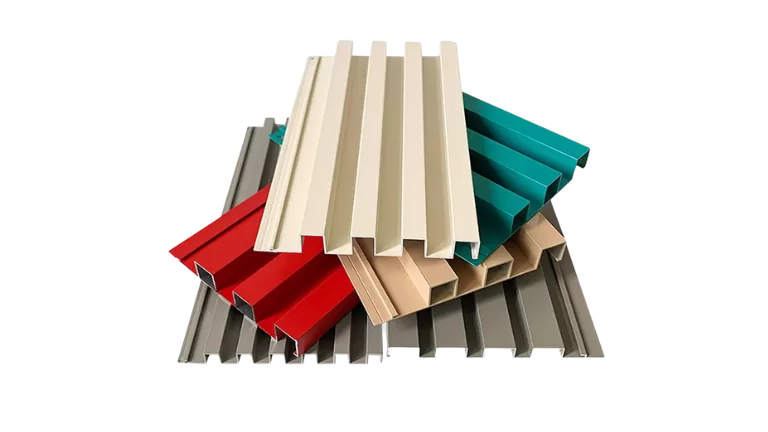
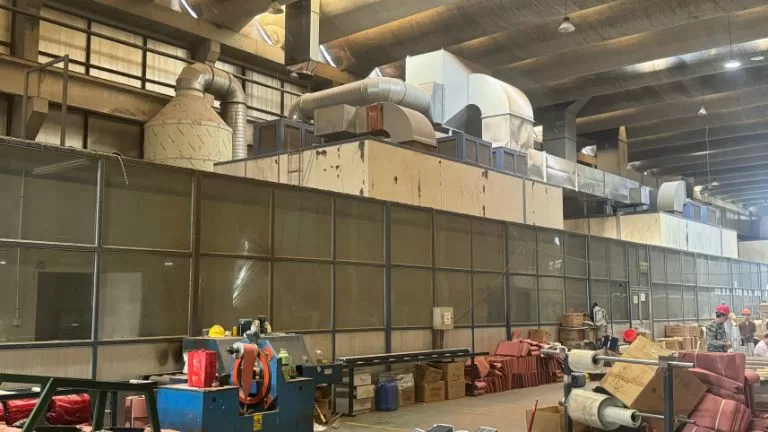
Wood Grain Transfer
Wood grain transfer printing is a process that gives aluminum profiles a natural wood-like appearance while retaining the durability and corrosion resistance of metal. By applying a base powder coating and transferring wood grain patterns through high-temperature curing, the result is a seamless, realistic, and long-lasting finish. At HTS-ALU, we have six advanced production lines, ensuring high efficiency, consistent quality, and a wide range of customizable wood grain designs.
These wood grain aluminum profiles are durable, weather-resistant, low-maintenance, and eco-friendly, making them ideal for architectural applications like windows, doors, cladding, and curtain walls, as well as furniture, fences, and decorative elements. Combining the beauty of wood with the strength of aluminum, HTS-ALU provides high-quality solutions for various industries.
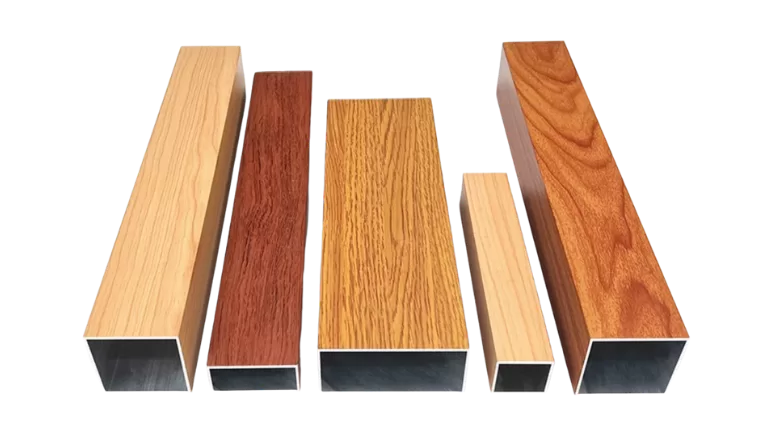
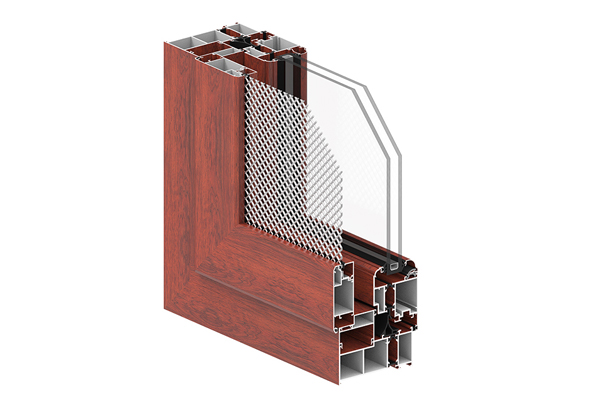
Brushed Finish
Brushed finish treatment is a surface pre-treatment process that creates a smooth, linear-textured appearance on aluminum profiles, enhancing their aesthetic appeal and preparing the surface for further treatment. The process involves using abrasive brushes or belts to produce uniform, fine lines along the aluminum surface, improving adhesion for subsequent treatments like anodizing or electrophoretic coating. This combination ensures a premium, refined finish with enhanced durability and resistance to oxidation or wear.
Applications
- Architectural and Building Materials: Decorative panels, window frames, and door profiles for a modern, sleek appearance.
- Furniture and Interior Design: Cabinet handles, decorative trims, and wall panels.
- Electronics and Appliances: Casings for electronic devices, home appliances, and other consumer products.
- Automotive and Transportation: Decorative parts and trims requiring a high-end metallic look.
HTS-ALU is equipped with an advanced brushed finish production line, allowing us to deliver high-quality, customizable brushed aluminum profiles to meet diverse customer needs.


Sandblasting
Sandblasting treatment, also known as frosted treatment, is a surface preparation process where aluminum profiles are blasted with abrasive materials under high-pressure air. This process removes impurities and surface irregularities, providing a uniform, matte texture while greatly improving adhesion for subsequent treatments like anodizing or electrophoretic coating. Sandblasting not only prepares the surface for further processes but also enhances the appearance of aluminum profiles, creating a clean, polished matte finish that is resistant to scratches and stains. HTS-ALU is equipped with two advanced sandblasting production lines, ensuring high-quality and consistent finishes tailored to various customer needs.
Sandblasted aluminum profiles are widely used in architecture, including facades, window frames, and decorative panels, as well as in furniture and interior design for sleek, textured finishes. They are also popular in electronics and appliances for non-reflective, durable casings and components, and in the automotive industry for strong and elegant decorative trims.
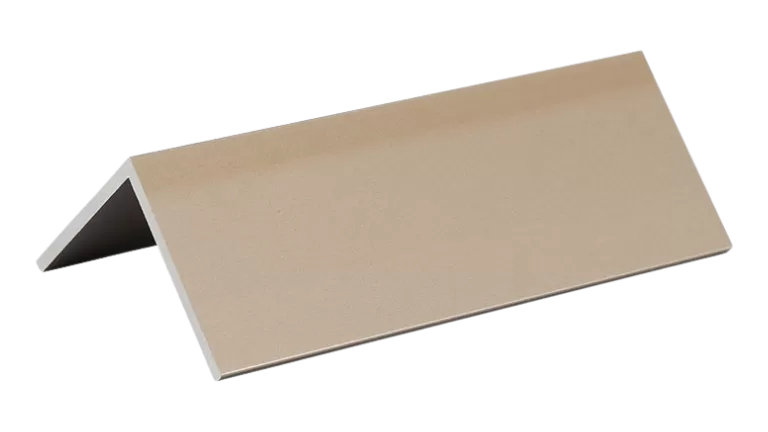
Polishing
Polishing treatment is a surface finishing process where aluminum profiles are treated to achieve a smooth, reflective, and polished surface. This process removes surface imperfections, such as scratches or uneven textures, enhancing the aluminum’s natural shine and aesthetic appeal. Polished aluminum profiles not only offer a high-end, lustrous appearance but also improve corrosion resistance and make subsequent treatments like anodizing or electrophoretic coating more effective.
Polished aluminum profiles are widely used in architecture, such as decorative panels, doors, windows, and facades, where a glossy, premium finish is required. They are also extensively applied in furniture and interior design, producing elegant and reflective components. Moreover, polished profiles are popular in electronics and appliances for sleek casings and in the automotive industry for high-end trims and accessories.
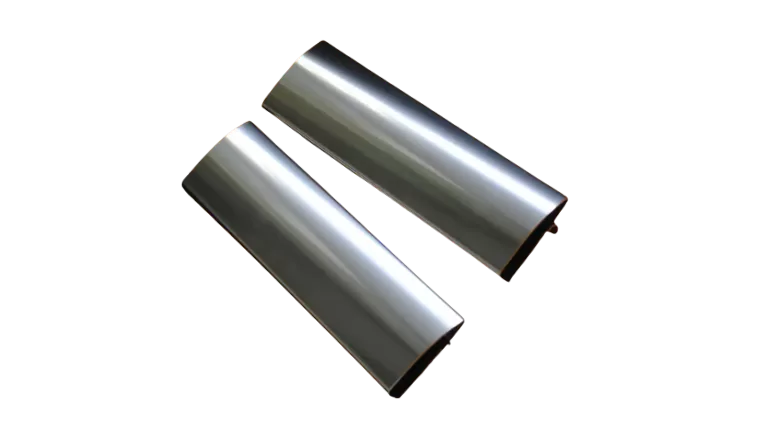
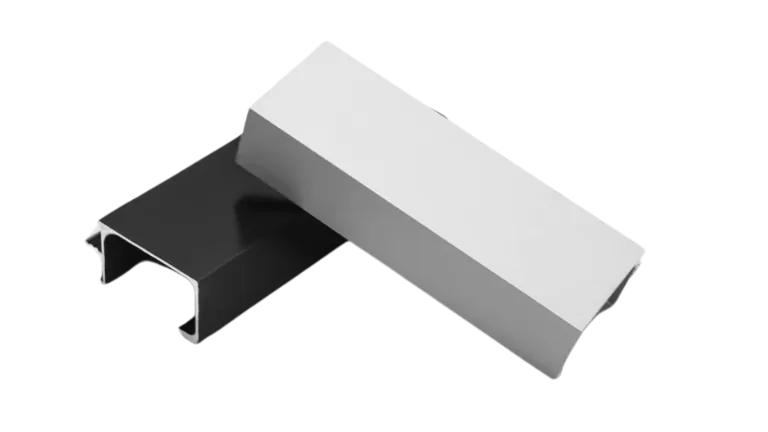
Other Surface Finish Options
In addition to common treatments, there are several advanced surface finishing options for extruded aluminum profiles that can further enhance their functionality and durability, such as:
Chemical Conversion Coating: Also known as chromate conversion coating, this process applies a thin chemical layer to the aluminum surface. It provides basic corrosion resistance, improves paint adhesion, and serves as a preparatory layer for further finishing, such as painting or liquid coating.
Metal Plating Treatments: Aluminum profiles can be coated with metals like nickel, chrome, silver, tin, or copper to enhance their electrical conductivity, thermal performance, and decorative appeal. These treatments are widely used in industries such as electronics, automotive, and architectural applications.
Micro-Arc Oxidation (MAO): An advanced anodizing technique that forms a ceramic-like oxide layer on the aluminum surface. This layer is exceptionally hard, wear-resistant, and heat-resistant, making it ideal for applications in extreme environments such as aerospace and automotive. Additionally, the resulting finish can be customized with various colors and textures for both functional and decorative purposes.
